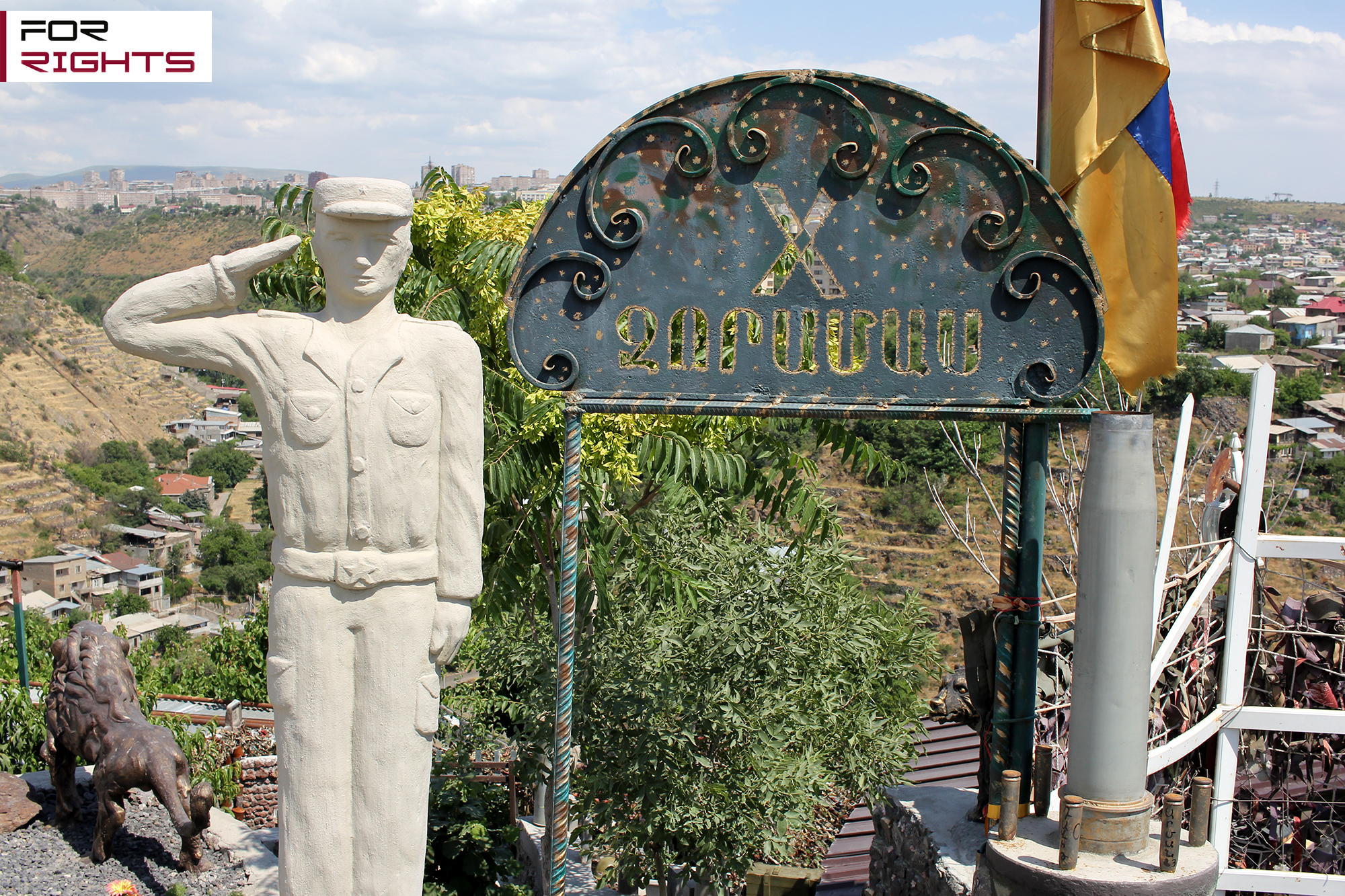In Yerevan, at the end of the Ulnetsi Street, there is a metal door, in the arched part of which we read: “X Military Unit“. A statue of a soldier is placed next to the door. This is where the memorial to the victims of the three wars in Artsakh can be seen. Admission is free; there are no locks or closed doors.
The private complex, the author of which is Aghabek Khachatryan, a participant in the Artsakh liberation war, resembles the fortress of Shushi. “The memorial complex was named X Military Unit, so that any serviceman would accept իտ as his own military unit. I want this to be a symbol of all the wars we went through and all the military units where our boys served,” says Aghabek Khachatryan, commonly known as Bek.
The complex is built of many small stones and on each stone is written the name of a soldier who was killed during the war. At the moment, there are 7,500 such stones here. And the names are written by the parents of the killed boys who come to the complex to share their grief.
“At least we try to comfort the parents and mothers of the killed boys with such things. They need comfort most of all, they need attention… I tell them this is your son’s house; you can come whenever you want. There is a mother who has already been here five times… Today the mother of an 18-year-old soldier came. Can you imagine? She says that for so many months no one has knocked on their door, no one has visited their house. We simply do not understand and do not accept such indifference,” says the author of the memorial.
Aghabek Khachatryan showed us some cultural relics kept in the memorial, brought from Surb Ghazanchetsots Church of Shushi. Khachatryan says he took them out of Shushi and brought them to Yerevan during the war, when the church was first shot at and he saw the dire condition of the church. “It was October 25. I saw the relics. Dropped… I do not know what to do. I took the stone laid by our grandfathers centuries ago, I thought, I will take it and then, when they start to repair the church, I will bring them back and hand them over to the museum in Shushi…”
Ani Gevorgyan

